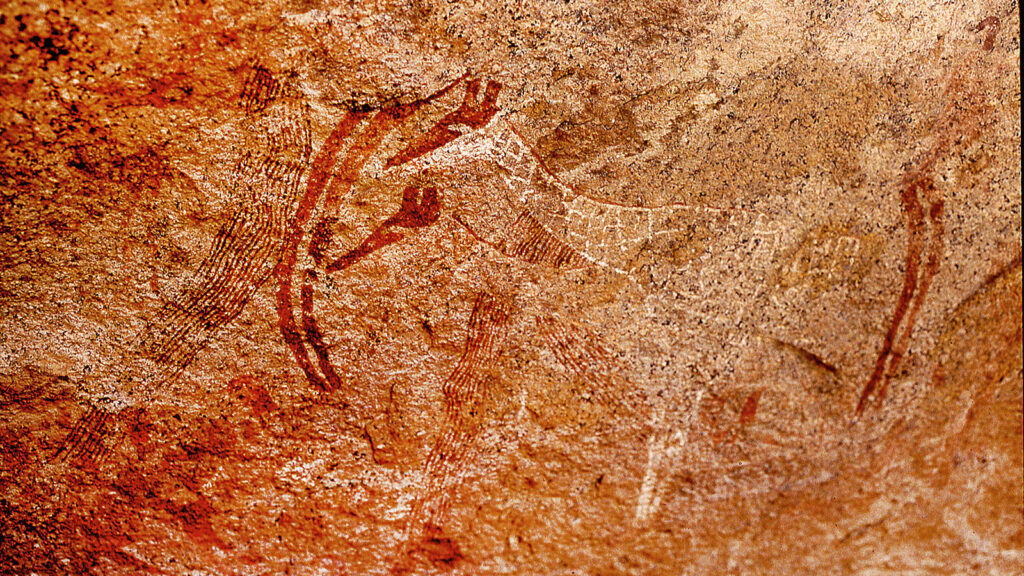The rock art of the San people of the Brandberg in Namibia can be interpreted as a strategy for conjuring up rain. Before the rain arrived, giant giraffes and snakes were seen as mirages in the sky.
While working as a visiting scholar at the University of Cape Town, I also became interested in the natural environment of the San Bushmen. I discovered that some South African rock paintings can be interpreted in a naturalistic way, reflecting experiences of mysterious mirages that are seen again and again (Ref. 316).
As the long-awaited rains approached and the calm before the storm settled in, the resulting upward mirage occasionally produced a few tower-like pillars, which then transformed into a horizontal, serpentine strip: an upside-down image of the earth on the horizon. In the Brandberg area of Namibia, the vertical columns were apparently interpreted by the natives who painted the rocks with their visions as mythical rain-bringing giraffes, which transformed into a rain snake that still retained the horned giraffe head.
Since this snake represents a landscape mirrored upwards and thus an inverted world, the shamans also had to invert their own appearance (white body paint, inverted gender) if they wanted to make contact with the rain snake, i.e. with the mirrored world, in order to direct the rain. This also affected their mental state, which also had to be inverted. When shamans hung upside down to enter the other world, they fell into a trance, as this position dangerously restricted the oxygen supply to the brain. All over the world, trance and other ceremonial inversions have become accepted by shamans as a spiritual path to the presumed otherworld (Ref. 447).


 Deutsch
Deutsch Italiano
Italiano